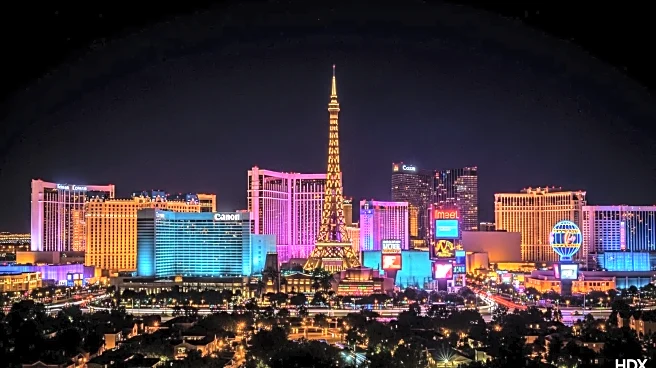What's Happening?
The U.S. hotel industry reported mixed results for the week ending October 11, 2025, according to CoStar. While overall hotel occupancy rates decreased by 1.9% compared to the same week in 2024, there
were gains in average daily rates (ADR) and revenue per available room (RevPAR). ADR increased by 2.6% to $171.88, and RevPAR rose by 0.6% to $118.75. San Francisco and New York City were among the top-performing markets, with San Francisco experiencing an 11.8% increase in occupancy and a 24.7% rise in RevPAR, largely due to Fleet Week festivities. New York City saw a significant jump in ADR, reaching $441.34, the highest among U.S. markets. Conversely, Las Vegas and New Orleans faced declines in RevPAR, indicating challenges in attracting visitors.
Why It's Important?
These mixed results highlight the ongoing challenges and opportunities within the U.S. hotel industry. The positive performance in San Francisco and New York City underscores the importance of local events and attractions in driving hotel occupancy and revenue. However, the declines in Las Vegas and New Orleans suggest that these markets may need to reassess their strategies to remain competitive. The overall increase in ADR and RevPAR indicates resilience in the industry, despite fluctuations in occupancy rates. This data is crucial for stakeholders in the hospitality sector as they plan for future events and adjust pricing strategies to optimize revenue.
What's Next?
The U.S. hotel industry may continue to experience fluctuations in performance due to calendar shifts and local events. Markets like Las Vegas and New Orleans might explore new strategies to attract visitors and improve RevPAR. Additionally, the industry could see further adjustments in pricing and marketing efforts to capitalize on high-demand periods and local attractions. Stakeholders will likely monitor these trends closely to adapt to changing consumer preferences and economic conditions.
Beyond the Headlines
The mixed results in the hotel industry may reflect broader economic and social trends, such as changes in travel behavior and consumer spending patterns. The impact of local events on hotel performance highlights the interconnectedness of tourism and hospitality with cultural and social activities. As cities continue to host major events, the hotel industry may need to innovate in service offerings and customer experience to maintain competitiveness.











